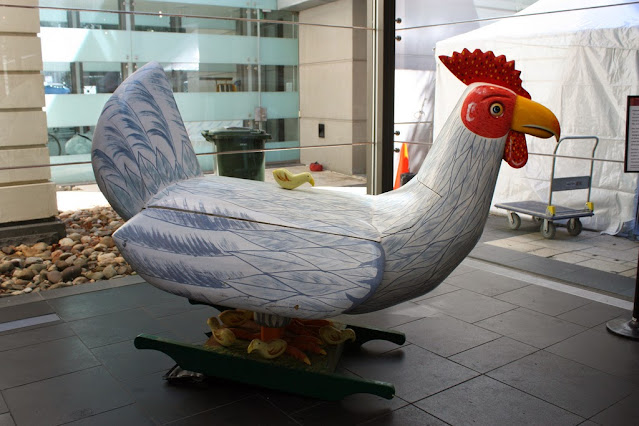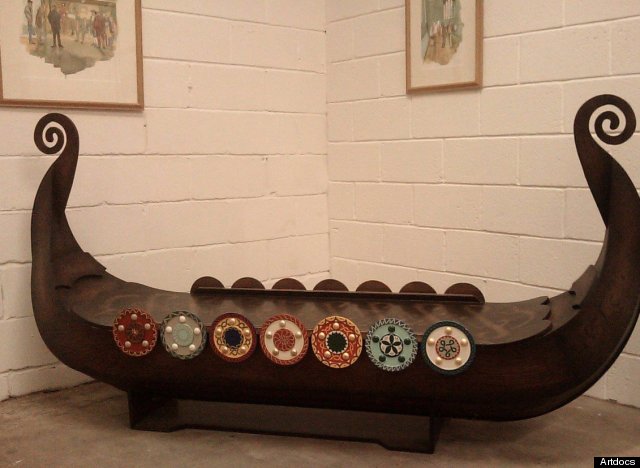---------oOo---------
Fantasy coffins, aka figurative coffins, are functional coffins made by specialised carpenters in the Greater Accra Region of Ghana.
Comments:
- The fantasy coffins developed out of figurative palanquins, a special kind of litter connected with the totem of its owner. The litters are used are used only by the local Ghanian kings and sub-chiefs when they are carried in public a events such as festivals.
- They are not only coffins but are considered works of art and were shown for the first time to a wider Western public in an exhibition in Paris in 1989.
- Fantasy coffins are mainly used by the southern Ghana-based Ga people because of their religious beliefs regarding the afterlife. The Ga believe that life continues in the next world in the same way it did on earth. Ancestors are also considered much more powerful than the living and able to influence their relatives who are still alive, and the social status of the deceased depends in part on the use of an exclusive coffin during burial.
- Fantasy coffins are only displayed on the day when they are buried with the deceased. They often symbolize the deceased person's profession. Certain shapes, such as a sword or stool, represent regal or priestly insignia with a magical and religious function. Only people with the appropriate status are allowed to be buried in such coffins.
- Animals such as lions, cockerels and crabs may be used to represent clan totems. Similarly, only the heads of clan families are permitted to be buried in coffins of that particular shape.
- Many coffin shapes evoke proverbs, which are interpreted in different ways by the Ga. That is why fantasy coffins are sometimes called proverbial coffins in the Ga language.
- Among Christians, the use of custom coffins is relatively recent and began in the Greater Accra Region around 1950. They were formerly used only by Ga chiefs and priests, but since around 1960, figurative coffins have become an integral part of the local funeral culture.
- Figurative coffins are produced to order. Master carpenters employ one or more apprentices who carry out a large part of the work. This allows the artist to make several coffins simultaneously. Coffins are generally made from the wood of the local wawa tree. In the interest of durability, items produced for museums are made from mahogany or another high-grade hardwood so as to guard against cracking and attacks by insects when transferred from one climate to another.
- Each coffin takes two to six weeks to produce, depending on the complexity of the construction and the carpenter's level of experience. For urgent orders, several carpenters will work on a single piece. The woodworking is done using simple, non-electric tools. Painting can take up to two days to complete. Some models are painted by the head of the workshop, others by local sign writers, some of whom are well known in the Western art market for making hand-painted movie posters.
Gallery:






























No comments:
Post a Comment
Note: Only a member of this blog may post a comment.